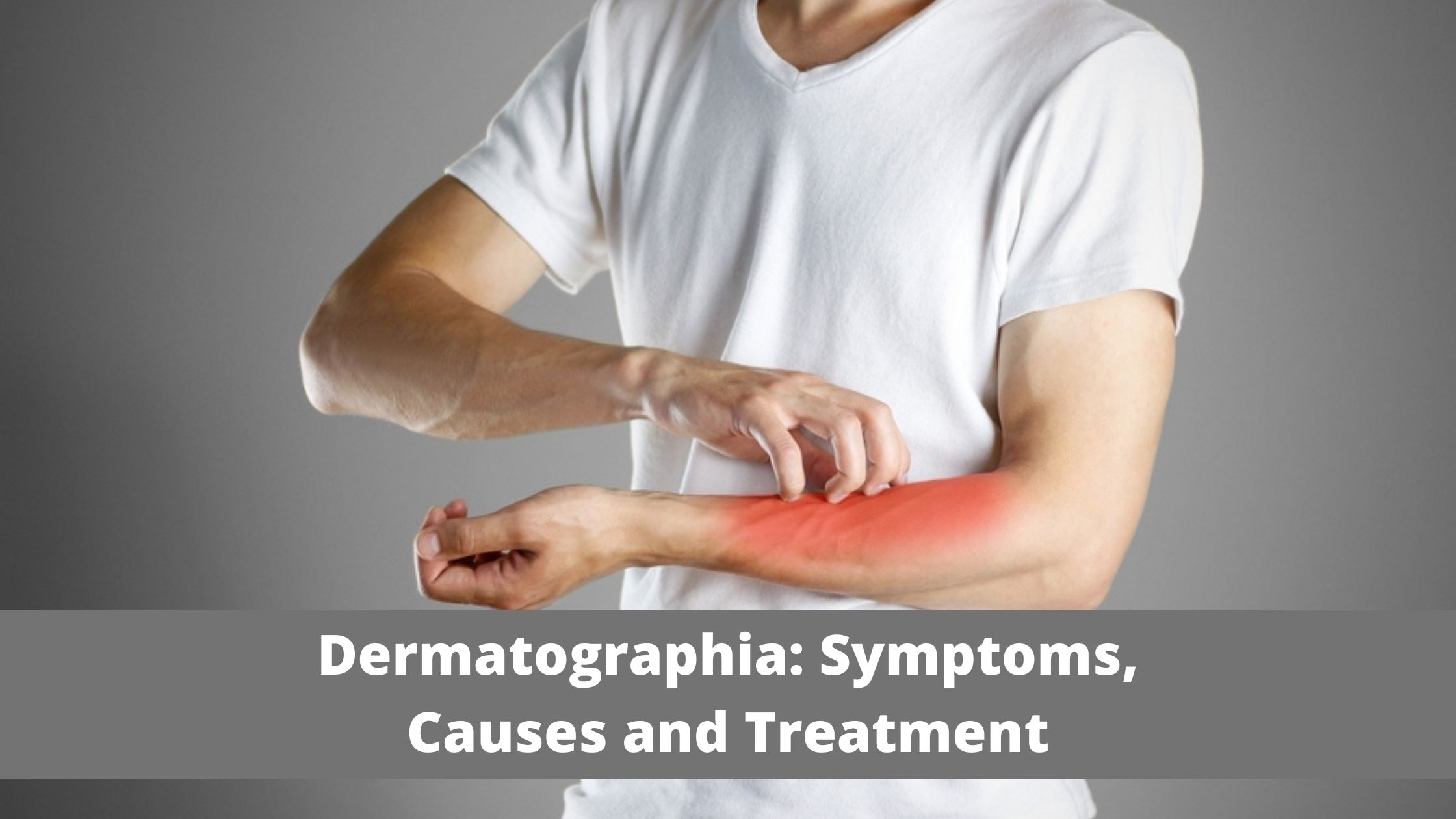

Dermatographia or dermatographism is a skin condition. It’s one of the most common types of inducible urticaria occurring in 2-5% of the population. Categorized under physical urticaria, the term Dermatographism means ‘Skin writing’ or ‘to write on skin’. An urticarial eruption is formed on the application of even mild downward pressure in the form of a linear wheal in the shape of whichever external force is applied. A wheal is a circumscribed dermal edema also known as welt or a hive.
Urticaria dermatographia or dermatographism urticaria can be broadly categorized as symptomatic and asymptomatic.
Symptomatic dermatographism is often associated with pruritus, stinging, prickling sensation, and erythematous wheals which is the rarer but more troublesome type of dermatographism. It is idiopathic in nature but often severe at night and aggravated by heat, minor pressure, exercise, stress and emotion, helicobacter pylori, bites, scabies, systemic mastocytosis.
An asymptomatic dermatographism is only presented with the formation of wheal in the shape of trauma-induced.
Although the exact cause for dermatographia disease is unknown, its pathogenesis involves the release of histamine from mast cells.
Although not conclusive the exaggerated biological response called, ‘ the triple response of lewis’, triggered by the mechanical trauma which releases some antigens that react with the bound IgE on mast cells. This leads to the release of histamine and other inflammatory mediators.
This is the triple response of lewis. The entire response takes about 5-10 minutes after an external stimulus.
It is known to be seen in diabetic, hyper/hypothyroidism, menopausal(onset), pregnant(mostly second trimester), or medication-related (penicillin) people. Other known risk factors associated with this condition are;
Also, Read All You Need To Know About Lipomas
Rare subtypes of Dermatographism
Differential Diagnosis
Primarily, dermographism urticaria is a clinical diagnosis. It is usually made by observing the response in the subject after using moderate pressure to scratch or stroke the skin gently. A tongue depressor is used for this purpose. The site of pressure application is of importance because of the reactiveness of areas the dorsal area or back which is protected from the external environmental influences and pressure than that of more exposed parts like buttocks or limbs. The exaggerated triple response of Lewis points to the diagnosis.
A spring-loaded stylus called a dermographometer is used to apply graded pressure and record skin responses. Its use is mostly limited to the research settings due to its reproducibility.
Hematological and biochemical screening tests are usually normal, except for few cases where increased blood histamine is recorded after experimental scratching.
Dermatographia, a benign condition, seldom governs treatment until it is symptomatic. Mostly seen in young adults this condition resolves itself after approximately five years to ten years in the majority of the cases.
Symptomatic dermatographia requires medical attention due to its presentations. It is mostly treated with antihistamines. H1 antihistamines like cetirizine, loratadine are the drugs of choice, and H2 antihistamines like diphenhydramine, hydroxyzine are combined in required cases. Omalizumab has also been considered for treatment and is under research for its efficacy. Phototherapy with Narrowband ultraviolet (UV)-B and oral psoralen plus UV-A therapy has also been advised in a few cases. Adjunctive treatment with vitamin C is also used as a dermatographia cure.
Antihistamines are to be taken under strict medical supervision only as certain activities like driving, operating heavy machinery have to be avoided.
Apart from major pharmacological therapy, prevention and avoidance of aggravating factors such as physical stimuli play a major role in controlling this condition. Good skincare and use of emollients can reduce dry skin thereby aggravating dermographia due to scratching. Wearing soft clothes, reducing stress and anxiety, and practicing yoga all play a key role in controlling this.
Ayurveda, the ancient medicine system of India under the broad heading of twak vikara encompasses many dermatological conditions. Udarda, a Kapha dominant condition, is mainly treated with shodhana ( bio purification procedures) and shamana aushadha ( pacificatory medicines) based on the patient. The internal medications mainly will have the quality of ushna, teekshna, Vata anulomana, and pachana. They subside both Kapha and Vata along with vimargagami pitta. Along with pathya and apathya, dietary and lifestyle modification suitable to patient and disease, Ayurveda has a potential holistic approach to dermatographia. Medicines like Haridra khanda, ardraka khanda, amrita satva, arogyavardhini vati, gandhaka rasayana, aragwadha amrutadi kashaya, dashamoola haritaki,, varanadi kashayam, ayaskriti, abhyanga with katu taila, vardhamana pippali rasayana, etc.
Although not life-threatening, dermatographism is a distressing condition. Asymptomatic dermographism requires no treatment but symptomatic dermographism should be treated till the condition is controlled or resolved. Reach out to our experts at VIMS today, for proper guidance. Our expert team of doctors from ayurvedic and modern fields of medicine is always within your reach.
Also, Read Ayurvedic herbs for skin
Disclaimer: The information included here is only for knowledge sharing purposes, and the blog is not intended to be a substitute for diagnosis, medical advice or treatment by a healthcare professional. Because of individual needs appropriate advice, the reader should consult their doctor to determine the appropriate disease depending on their situation.

 Emergency Number
Emergency Number